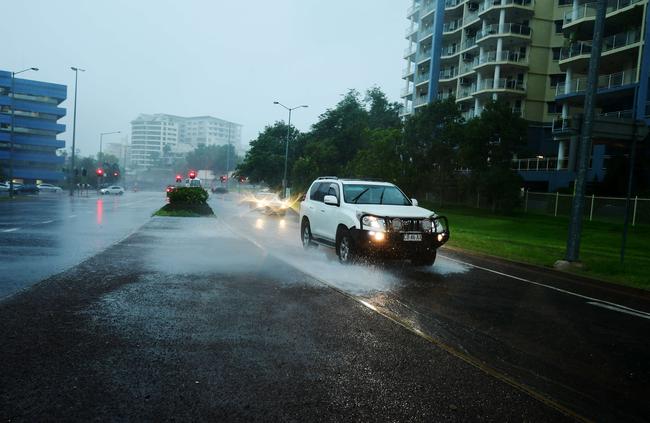Revealed: how cyclones form and are named
Cyclones threaten the Territory each year, but how do they become so powerful? And who names them?

Northern Territory
Don't miss out on the headlines from Northern Territory. Followed categories will be added to My News.
TERRITORIANS are all too familiar with the chaos caused by cyclones, but how do these frightening storms form? And who names them?
FORMATION
Tropical cyclones develop from a region of low atmospheric pressure over warm tropical oceans where the temperature of the water is greater than 26.5C.
As the pressure in the centre decreases, wind speeds around the system increase.
When the average wind speed near the centre reaches a constant 63km/h and extends more than halfway around near the centre, the system is generally called a tropical cyclone and given a name.
Winds can increase further and, in the strongest tropical cyclones, extreme wind gusts may exceed 300km/h.
Tropical cyclones are rated on a scale from one to five, one being the weakest and five the strongest.
In coastal areas, the sea may rise several metres above the normal tide, inundating low-lying areas.
This is called a storm surge and is an extremely dangerous manifestation of the tropical cyclone’s destructive capacity.
Heavy rains accompanying a tropical cyclone can cause major flooding over wide areas of the coast and far inland from the point of impact on the coast.
Destructive winds accompanying tropical cyclones also produce phenomenal seas, which are dangerous both for vessels which have ventured out to sea and those moored in harbours.
These seas can also cause serious erosion of foreshores.
TROPICAL CYCLONE NAMES
The first tropical cyclone this season will be named Blake.
A complete list of tropical cyclone names can be found at bom.gov.au/cyclone/about/names.shtml
The name of a new tropical cyclone is usually selected from this list of names.
If a named tropical cyclone moves into the Australian region from another country’s zone of responsibility, the name assigned by the other country will be retained.
The names are normally chosen in sequence. When the list is exhausted, the Bureau of Meteorology returns to the start of the list.
If a particular tropical cyclone has had a significant impact, that name is usually retired from the list and a replacement name is selected.


